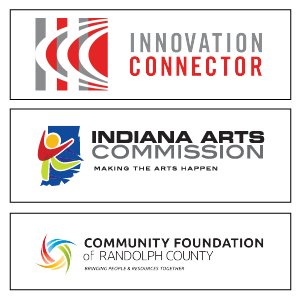FSSA launches Medicaid waiver waitlist dashboard, lawmakers want more information from the agency

Thousands of people are still waiting for home- and community-based health services as Indiana processes people on waitlists for Medicaid waivers. The Indiana Family and Social Services Administration launched a dashboard to provide updates on the waitlists.
The state implemented the waitlists in April for Medicaid members trying to access services under the Pathways and the Health and Wellness waivers as a part of its response to last year’s Medicaid forecasting error. There are more than 13,000 people are on the waitlists — which is more than when FSSA announced it would start processing people off of the lists.
New slots opened in July, with enough to cover the entire Pathways waitlist and most of the Health and Wellness waitlist. However, the agency said it will process fewer than one thousand people a month. This could mean waiting months to access services, but for some members it could take years to be invited onto the waiver.
FSSA launched a static dashboard that shows how many people have received an invitation for each waiver. Indiana Medicaid Director Cora Steinmetz said the agency is also exploring other ways to improve how members are processed.
“We’re convening a workgroup to start to see what efficiencies might be there as far as the numbers that we’re inviting each month,” Steinmetz said.
The dashboard provides clarity on what the agency considers “priority” applicants. Members who are discharged from the hospital, or are transitioning from a nursing facility or the CHOICE program have “priority status” for both waivers.
The dashboard shows a monthly breakdown of invitations sent out by FSSA, but it does not have live updates on the number of people on the waitlist or information on how long it will take to process the waitlist.
FSSA said it cannot give people on the waitlist an estimated time they will receive an invitation letter because they say it is dependent on how many people are a part of the priority categories month-to month.
Steinmetz also said the state is working to understand how long other parts of the process take.
“We are continuing to gather data around what’s the average time from the time of the invitation to when the individual is actually enrolled,” Steinmetz said. “It is very case specific.”
Not knowing how long it will take to be invited onto the waitlist can pose a challenge for members. Rep. Ed Clere (R-New Albany) said many people are stuck in a rough financial position while they wait for services.
“Having reports of where things stand does nothing for the families of the individuals and the families that are being impacted,” Clere said.
Several lawmakers on the Medicaid Advisory Committee said they were hearing from people who had done everything they needed to be prepared to join the Pathways waiver. However, now they are spending months paying for a nursing facility while the state processes people for assisted living services.
READ MORE: Indiana family tries to navigate Medicaid waivers as FSSA slowly processes waitlist
Join the conversation and sign up for the Indiana Two-Way. Text “Indiana” to 765-275-1120. Your comments and questions in response to our weekly text help us find the answers you need on Medicaid and other statewide issues.
Steinmetz said the agency is aware of this issue.
“We are actively exploring some short term solutions for them from a financial standpoint,” Steinmetz said. “We are having conversations about a narrow path for these individuals who are kind of caught in this in-between space because of the challenges around assisted living, specifically, and the waitlist situation.”
Steinmetz said the state is considering certain funding resources to support these members, including using federal funding still available from the COVID-19 public health emergency.
Clere urged FSSA to also consider members who are stuck in a difficult financial position who are receiving services other than assisted living. Steinmetz said the state is “exploring options.”
Sen. Fady Qaddoura (D-Indianapolis) said he wants more information from FSSA about what it needs from lawmakers to quickly process the entire waitlist.
“It’s not a matter, for us as legislators, that there’s no money in the budget,” Qaddoura said. “We tend to find money for all kinds of issues, so we want to be sure that we truly can help those who are in desperate need to get that.”
Qaddoura said he wants to have that information going into next year’s legislative session since lawmakers will be determining the state budget. In addition to budget decisions determining what resources FSSA has to process people on the waitlist, the state budget can also determine how many slots the state has available.
“While some people think it is true that [the Centers for Medicare and Medicaid Services] has to approve the number of slots, but really it is, it is also influenced by decisions made at the state level budgetary numbers,” Qaddoura said. “Because the Medicaid program is a match between the federal government and the state as far as contributions.”
This means if lawmakers want to increase the number of slots, they have to choose to invest more in those waivers in the state budget.
Steinmetz said the agency will work to provide lawmakers with those estimates.
Abigail is our health reporter. Contact them at aruhman@wboi.org.


